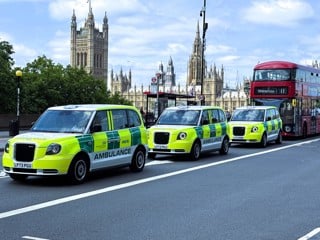Paula Maxwell has followed what for many is a traditional route into fleet management.
Originally a personal assistant, she was handed responsibility for Longhurst Group’s fleet as an extension of her role after a company restructure.
Previously, a housing officer was looking after the outright-purchased fleet.
At that point, in 2004, it meant spending one day a week overseeing the 70 cars on the fleet.
But as the company centralised its services and expanded, and the fleet grew in size, Longhurst bosses realised that they needed a full-time manager.
Maxwell, by now spending most of her time on the fleet, was appointed car fleet manager in April this year.
The official recognition earned her much greater respect from the fleet drivers, she says. Now they knew she was in charge.
The promotion was no more than she deserved.
Over the previous three years, Maxwell had undertaken a full and wide ranging review of the fleet, including analysing the wholelife cost of contract hire versus outright purchase.
It resulted in contract hire through a sale and leaseback deal with Lloyds Autolease (now Lex Autolease) in June 2007.
Cashflow has improved and the company estimates it is saving around £10,000 a year, with other indirect savings, for instance administration time.
“After I established our cost base and contacted the contract hire companies for their costs, contract hire through a sale and leaseback agreement was the obvious option.
"It is less time consuming for me, we have less residual values risk and we know the pricing for the term,” says Maxwell.
The timing was apposite: a year later residual values plummeted in one of the biggest and most sudden slumps in recent times. Although its leasing rates rose, the impact was nowhere near as severe as it would have been had Longhurst still been carrying the residuals risk.
Longhurst, a regional group of housing associations which owns 16,000 homes in more than 40 local authority areas, has grown rapidly to a fleet of 137 cars and 16 vans. It also has 250 grey fleet drivers that operate under the similar rules and conditions as the main fleet.
They have to provide a copy of their insurance certificate with business use included, MOT certificate if applicable and driving licence (card and paper).
Company car drivers have their licences checked twice a year by Intelligent Data Systems, unless they have more than six points when it becomes every three months. Their second drivers’ licences are also checked.
“We are updating our car policy this year to add grey fleet drivers – it will be more than just a company car policy,” says Maxwell. New sections will include safe driving and vehicle condition.
When some essential users are travelling 1,500 miles a month, gaining control is crucial for the company, for both costs and health and safety.
Longhurst has phone conferencing facilities and will shortly introduce video conferencing which it expects will cut the number of journeys, particularly for internal meetings.
Much of Maxwell’s learning came on the job, but in 2008 she undertook training with the Institute of Car Fleet Management (ICFM). Having achieved the Certificate earlier this year, she is now studying for the Diploma.
And she has joined ACFO – the Association of Car Fleet Operators.






















Login to comment
Comments
No comments have been made yet.